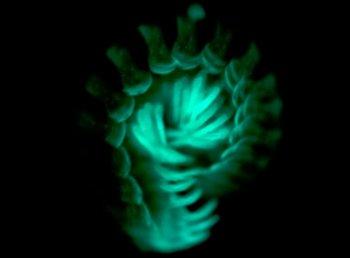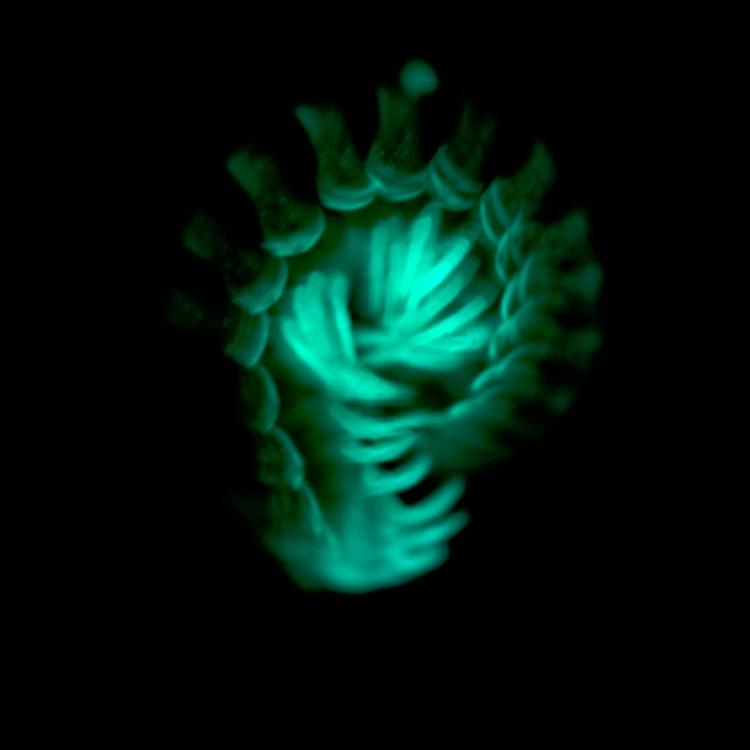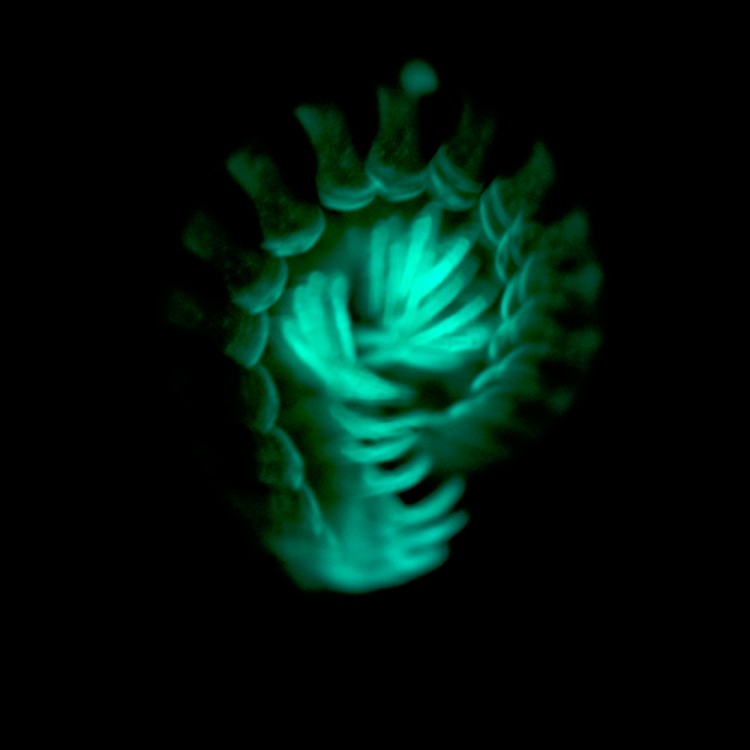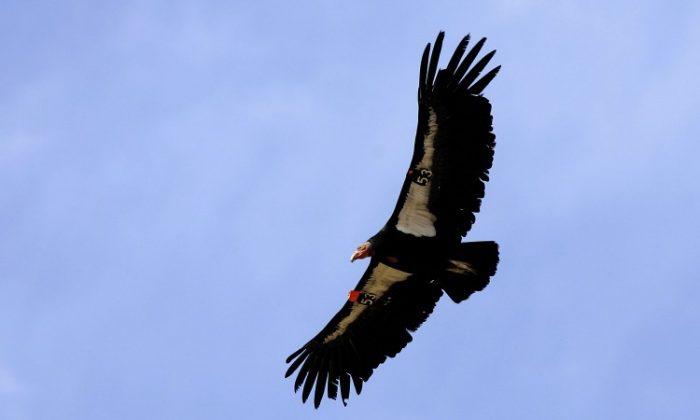Glow-in-the-dark millipedes in the genus Motyxia are sending a message to their predators: keep away.
This is the only known millipede genus that displays bioluminescence. However, why they have this ability has puzzled researchers until now.
For other animals, such as fireflies, glowworms, and deep-sea creatures like angler fish, bioluminescence is thought to help attract mates or lure prey. Motyxia millipedes, on the other hand, are believed to be blind and feed mostly on decaying vegetation, so scientists conjectured that their ability had a different function.
Now, a team of researchers from Arizona has evidence that the nocturnal creepy-crawlies’ glow is a warning mechanism.
“When they are disturbed, they ooze toxic cyanide and other foul-tasting chemicals from small pores running along the sides of their bodies as a defense mechanism,” said study lead-author Paul Marek in a press release.
“Some millipede species that are active during the day display bright warning colors to announce their defenses to predators, but because Motyxia are out when it’s dark, we hypothesized they use their greenish glow in place of a warning coloration.”
To test their hypothesis, Marek and his colleagues obtained hundreds of fake, clay millipedes as well as real, live millipedes to distribute along the grounds of the Giant Sequoia National Monument in California. Half the of the clay models were painted with glow-in-the-dark paint, while half of the live millipedes were covered with a glow-concealing paint.
The next morning, the team found that four times as many non-glowing millipedes had been attacked than their glowing counterparts. Meanwhile, twice as many of the non-glowing replicas were attacked than the luminescent models.
“It was just—carnage,” Marek said. “We were really surprised at the predation rate on these millipedes. Overall, about one-third of them—both real and fake—had been attacked.”
To learn more about the millipedes’ predators, the team compared the attack wounds on the clay models and live specimens with teeth in rodent skulls. They concluded that the grasshopper mouse (Onychomys torridus) is one of the millipedes’ major predators.
“Remarkably, most of the predation marks were localized to the head, even in the clay models,” Marek noted. “So somehow those predators were able to tell the head from the tail end and go for the head first, which is a behavior typically seen in vertebrate predators.”
The glowing Motyxia species are known to be found only in certain parts of California: the Santa Monica Mountains, the Tehachapi Mountains, and the southern Sierra Nevada Mountains.
“If you sit there in a moonless night, the ground will look like the starry night sky up above, from all those millipedes glowing in the dark,” said Marek.
But the biochemistry behind the mechanism remains to be elucidated. “For now, all that we know is they use a different mechanism than fireflies or glowworms which use an enzymatic reaction,” Marek said.
“The millipedes have a photoprotein that is similar to the Green Fluorescent Protein of the jellyfish Aequorea victoria. It is thought to be activated by calcium and energy-rich compounds in the cell to create the glow.”
The study appears online in the Sept. 26 edition of Current Biology.
This is the only known millipede genus that displays bioluminescence. However, why they have this ability has puzzled researchers until now.
For other animals, such as fireflies, glowworms, and deep-sea creatures like angler fish, bioluminescence is thought to help attract mates or lure prey. Motyxia millipedes, on the other hand, are believed to be blind and feed mostly on decaying vegetation, so scientists conjectured that their ability had a different function.
Now, a team of researchers from Arizona has evidence that the nocturnal creepy-crawlies’ glow is a warning mechanism.
“When they are disturbed, they ooze toxic cyanide and other foul-tasting chemicals from small pores running along the sides of their bodies as a defense mechanism,” said study lead-author Paul Marek in a press release.
“Some millipede species that are active during the day display bright warning colors to announce their defenses to predators, but because Motyxia are out when it’s dark, we hypothesized they use their greenish glow in place of a warning coloration.”
To test their hypothesis, Marek and his colleagues obtained hundreds of fake, clay millipedes as well as real, live millipedes to distribute along the grounds of the Giant Sequoia National Monument in California. Half the of the clay models were painted with glow-in-the-dark paint, while half of the live millipedes were covered with a glow-concealing paint.
The next morning, the team found that four times as many non-glowing millipedes had been attacked than their glowing counterparts. Meanwhile, twice as many of the non-glowing replicas were attacked than the luminescent models.
“It was just—carnage,” Marek said. “We were really surprised at the predation rate on these millipedes. Overall, about one-third of them—both real and fake—had been attacked.”
To learn more about the millipedes’ predators, the team compared the attack wounds on the clay models and live specimens with teeth in rodent skulls. They concluded that the grasshopper mouse (Onychomys torridus) is one of the millipedes’ major predators.
“Remarkably, most of the predation marks were localized to the head, even in the clay models,” Marek noted. “So somehow those predators were able to tell the head from the tail end and go for the head first, which is a behavior typically seen in vertebrate predators.”
The glowing Motyxia species are known to be found only in certain parts of California: the Santa Monica Mountains, the Tehachapi Mountains, and the southern Sierra Nevada Mountains.
“If you sit there in a moonless night, the ground will look like the starry night sky up above, from all those millipedes glowing in the dark,” said Marek.
But the biochemistry behind the mechanism remains to be elucidated. “For now, all that we know is they use a different mechanism than fireflies or glowworms which use an enzymatic reaction,” Marek said.
“The millipedes have a photoprotein that is similar to the Green Fluorescent Protein of the jellyfish Aequorea victoria. It is thought to be activated by calcium and energy-rich compounds in the cell to create the glow.”
The study appears online in the Sept. 26 edition of Current Biology.







Friends Read Free